Search results for “tomorrow fund”
November 17, 2020 FOR IMMEDIATE RELEASE Contact: Brian J. Johnson, California Director(415) 385-0796; bjohnson@tu.org Sam Davidson, Communications Director(831) 235-2542; sdavidson@tu.org Trout Unlimited lauds Governors Newsom and Brown, Warren Buffett, Tribes for clearing path to Klamath River dam removal States of California and Oregon demonstrate “timely and critical leadership” in resolving issues related to transfer of…
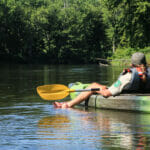
In 2020 Trout Unlimited, in partnership with the Huron-Manistee National Forest, ran a program that employed interns on three Wild and Scenic Rivers. The interns represented both Trout Unlimited and the Forest Service, informing river users of the regulations, providing information on coldwater resources as well as Wild and Scenic designations and Leave No Trace principles. Interns were stationed at river landings to check permits (where required) and educate…
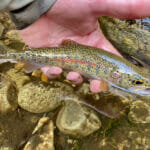
Redband trout (Oncorhynchus mykiss sub-species) Species summary and status: Redband trout are subspecies of rainbow trout and exist in two well-defined geographic regions. The Columbia River redband trout is found in Montana, Washington, and Idaho, and the Great Basin redband trout is found in southeastern Oregon and parts of California and Nevada. The redband is similar…
11/3/1999 Lower Snake River Dam Bypass Economic Impact Q & A Lower Snake River Dam Bypass Economic Impact Q & A Contact: 11/3/1999 — — Q. What’s the bottom line? The study conducted by the U.S. Army Corps of Engineers’ Drawdown Regional Economic Workgroup (DREW) concludes that bypassing the four Lower Snake dams would create…
11/25/2003 TU Member Wins Hoover Medal, Highest Humanitarian Honor for Engineers TU Member Wins Hoover Medal, Highest Humanitarian Honor for Engineers Contact: Tim Zink Manager, Media Relations Trou Unlimited 703.284.9427 11/25/2003 — Knoxville, Tenn. — An engineer in Tennessees highland coalfields recently was awarded his professions highest honor for humanitarian service for directing a project…
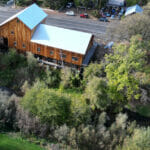
For Immediate Release Contact: Chrysten Rivard, chrysten.rivard@tu.org, (541) 973-4431 Jay (Howard) O’Neil, joneil@ksu.edu, (785) 410‐2303 Bob Russell, rrussell1950@aol.com, (503) 880‐2147 Sharing the Water: Partnership Secures Permanent Water Protections to Benefit Native Fish and Keep a Historic Mill Operating in Oregon’s Rogue River Basin Eagle Point, Oregon – A long-term collaboration between the Butte Creek Mill…
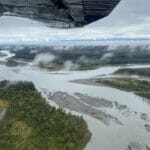
What an industrial access road means for a remote region with some of the best hunting and fishing in southcentral Alaska.
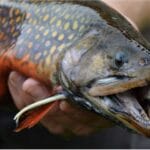
On the Lake Superior coast, a coalition of partners facilitated by Trout Unlimited are coming together to breathe new life into the study and recovery of native coaster brook trout – a life history variation of brook trout that spend part of their lives in Lake Superior. Scientists do not consider them to be genetically…

Helping organize rallies, like this one at the Idaho State Capitol, to show elected officials how sportsmen and sportswomen feel about legislation is an important part of the politics of conservation. Trout Unlimited photo. By Brett Prettyman Waders and work boots are the uniforms people typically think of when they envision Trout Unlimited staffers, members…
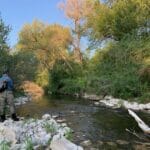
“The Provo River stakeholders mimicked a model of collaboration seen often but not enough in other parts of the West. We found a win-win scenario that worked within the existing system. We’ve worked with a water supplier whose primary goal is to use all their water allocation in the best use possible and a corporation striving to make rivers and streams around where they use water and do business healthier. That’s a formidable partnership moving forward to keep people, businesses, and our fish happy.”
Trout Unlimited Asks Court To Expedite Decision In The Case Involving California’s State Fish Trout Unlimited Asks Court To Expedite Decision In The Case Involving Californias State Fish Contact: Steve Trafton California Policy Coordinator (510) 528-4772 1/17/2002 — Albany, CA — The national conservation organization Trout Unlimited has asked a federal judge to grant their…
Trout Unlimited Joins in Historic Pact on Future Operation of Bear River Dams Trout Unlimited Joins in Historic Pact on Future Operation of Bear River Dams Signing ceremony Wed. at 10 a.m. at Gov. Kempthornes office in Boise Contact: Scott Yates Western Native Trout Programs Director: TU 208.552.0891; Cell: 208.520.3467 8/27/2002 — Idaho Falls, Idaho…
11/19/2003 Statement of Trout Unlimited Calling on the Senate to Fix or Eliminate Energy Bill Provisions HArmful to Fish and Wildlife Statement of Trout Unlimited Calling on the Senate to Fix or Eliminate Energy Bill Provisions Harmful to Fish and Wildlife Contact: Chris Wood Vice President of Conservation Trout Unlimited 703.284.9403 11/19/2003 — Washington, D.C.…
4/19/2006 States and feds agree to work together to restore and enhance the Driftless Area EMBARGOED UNTIL 10:00 a.m., April 19, 2006 Contact: Duke Welter, 715-579-7538 or Kathleen Campbell, 571-274-0597 States and Feds Agree to Work Together to Restore and Enhance the Driftless Area Wisconsin, Minnesota, Iowa and Illinois join with the U.S. Department of…
7/23/2001 Sennebec Pond Association & Trout Unlimited Host Information Meeting Sennebec Pond Association & Trout Unlimited Host Information Meeting Contact: 7/23/2001 — — July 23, 2001 Union, Maine . . . The Sennebec Pond Association and the St. George Chapter of Trout Unlimited will host a Public Information Meeting on Monday, July 30 to explain…

Morgan Werner, Matt Anderson, Niyah Banfill, and Meriah Gannon planting riparian trees along Blakeslee Creek. By Jamie Vaughan Rockford locals may have noticed green-clad students working throughout the community this summer, usually covered in mud and always sporting a smile. It may look like a typical summer gardening job, but don’t be fooled: This group…
11/06/2007 Whirling Disease Foundation Merges with Trout Unlimited November 6, 2007 Media Contacts: Dave Kumlien, Executive Director, Whirling Disease Foundation 406-570-0023Jack Williams, Senior Scientist, Trout Unlimited 541-261-3960 FOR IMMEDIATE RELEASE: Whirling Disease Foundation Merges With Trout UnlimitedAlliance Bolsters Efforts to Combat the Impacts of Aquatic Nuisance Species and Whirling Disease on Nations Trout and Salmon…
06/25/2008 Trout Unlimiteds Upper Big Lost Project Will Receive Proceeds From Silver Creek Outfitters Film Festival June 25, 2008 FOR IMMEDIATE RELEASE: Contact: Ed Northen: 208-788-316 Trout Unlimiteds Upper Big Lost Project Will Receive Proceeds From Silver Creek Outfitters Film Festival KETCHUM, ID The Hemingway Chapter of Trout Unlimited (TU) will receive the proceeds from…
Contact:Russ Schnitzer, (307) 438-1365Steve Moyer, (703) 284-9406 FOR IMMEDIATE RELEASE: Trout Unlimited Praises Senate Reauthorization of Farm Bill, Urges Swift House Passage Conservation Programs a Proven Investment in Nation’s Outdoor Heritage and Rural Communities Arlington, Va. Trout Unlimited today commended the U.S. Senate for voting to reauthorize the Farm Bill and ensure that its highly…
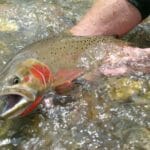
chalk_creek_bonneville.jpg A Chalk Creek native Bonneville cutthroat: Reconnected to spawning habitat FOR IMMEDIATE RELEASE Nov. 6, 2013 Contact: Paul Burnett, 801-436-4062 pburnett@tu.org Tim Hawkes, 801-928-9008 thawkes@tu.org Trout Unlimited, rancher boost fish habitat on Chalk Creek Project reconnects Weber River cutthroats with spawning habitat (Salt Lake City)The Weber River is home to one of Utahs most…










